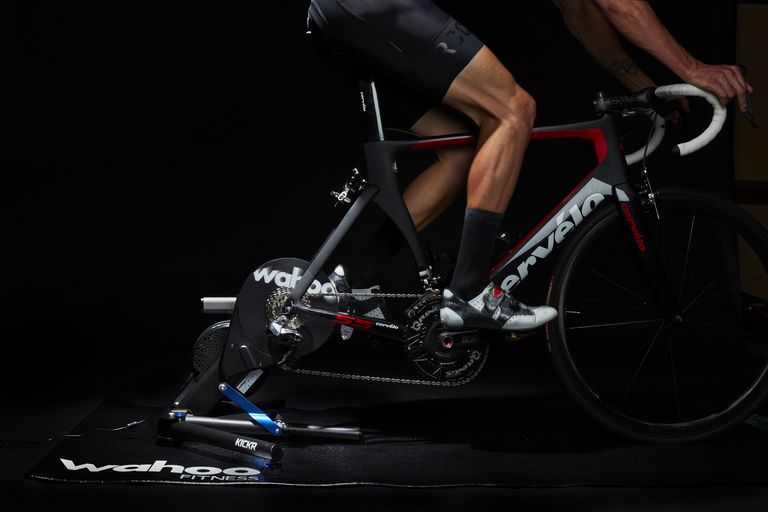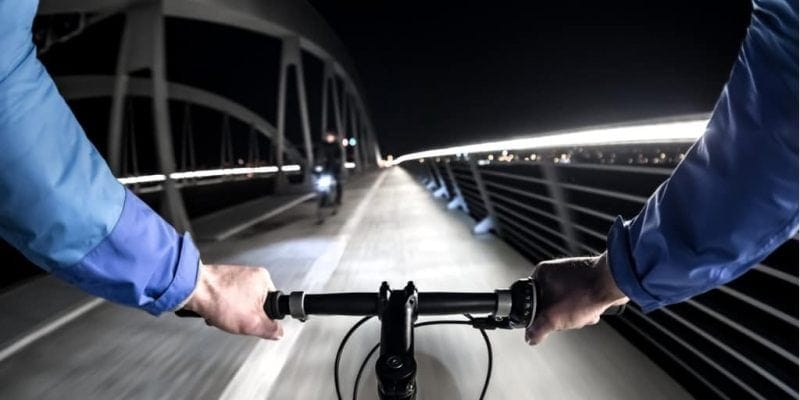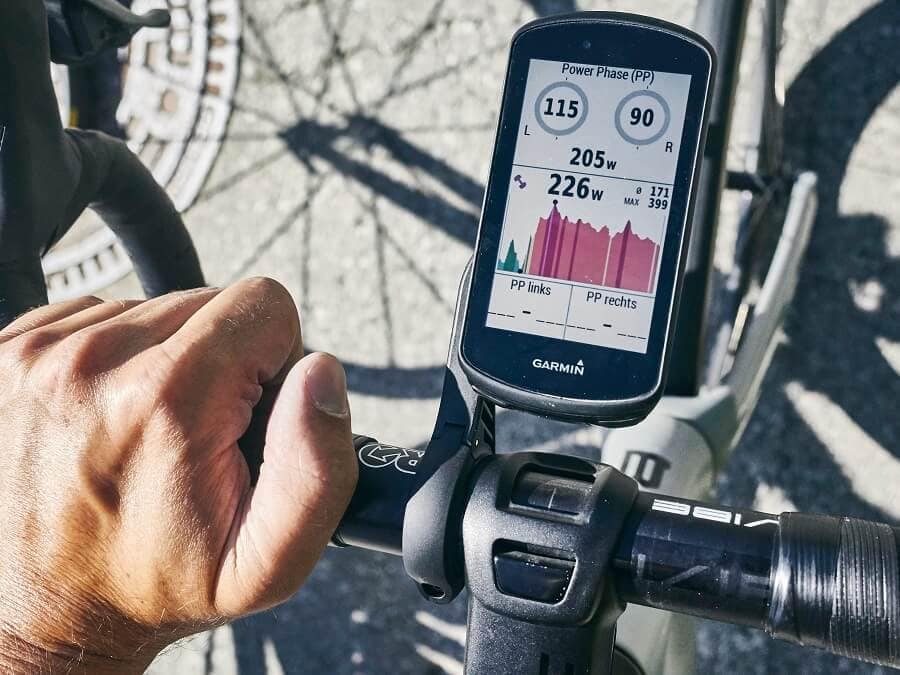A Cyclist’s Guide to Powermeters
10 years ago, powermeters are only found on the procyclists’ bike or those that can afford to spend $2,000+. But since then, the bike industry has evolved; more brands are entering the powermeter market with the likes of Power2Max, Stages, and 4iiii among others. And this helps to bring down the cost significantly.
If you look around mid to high-end bikes these days, chances are you’ll see a powermeter. So, if you’re also thinking about getting a powermeter in the near future, there are some things you’ll need to know beforehand.
On this page, we’ll cover the basics and some of the important questions you need to ask yourself before committing to one.
Let’s jump straight in.
Types of Powermeters
Powermeters can be placed in several locations on your bike. Which kind you want depends largely on several factors, such as ease of installation, accuracy, and data type.
Let’s take a look at the different types of powermeters that are on the market and how they stack up in terms of accuracy, ease of installation, and power data output.
The 4 common types of powermeters are :
- Spider based
- Wheel hub
- Crank arm
- Pedal based
1. Spider Based
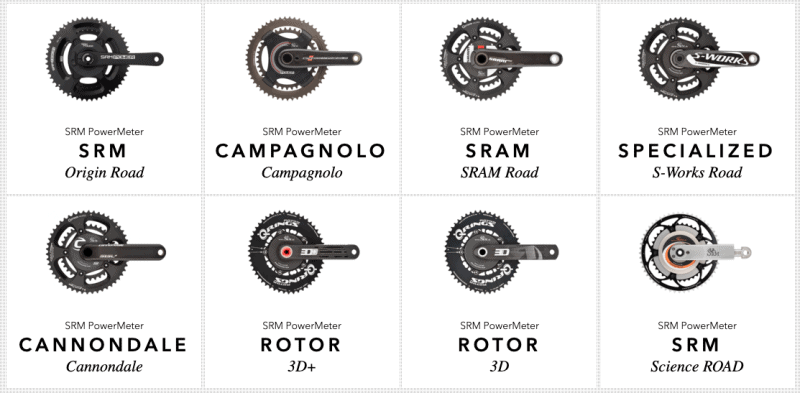
Since SRM designed the first spider powermeter more than 30 years ago, it has become one of the most popular styles of meters available.
They come in a wide variety of configurations, are designed to be compatible with the broad range of crankarm brands and chainring sizes that exist in the market today. This versatility coupled with the fact that they are very accurate makes them an attractive option.
However, it should be noted that because they’re mounted onto the chainring, they can’t be easily removed and installed on another bike. You’ll have to remove the entire crankset.
Examples of spider-based powermeters : Quarq Dzero, Power2Max NG Road, SRM Origin
2. Crank Arms
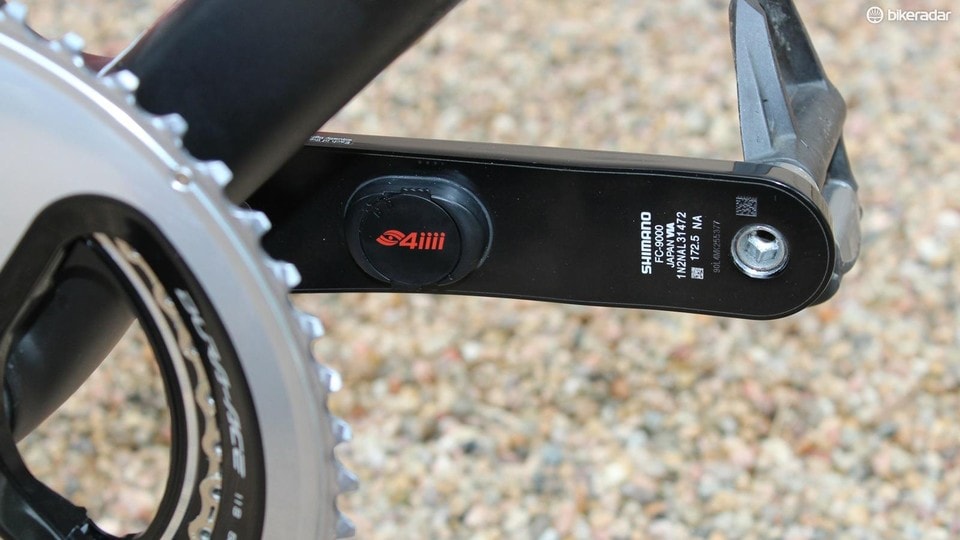
Like pedals, powermeters that attach to the crankarms are easy to swap in and out, making them a great option for cyclists looking to use their powermeters on multiple bikes.
These meters also offer several data options. They can be single-sided for left leg power only or double-sided, which allows you to measure left and right side power independently.
These are probably the lightest powermeter today as they only add 30 to 40 grams of weight to your existing crankarms.
Examples of crankarm based powermeters : Stages Gen 3 L and 4iii Precision
3. Pedal Based
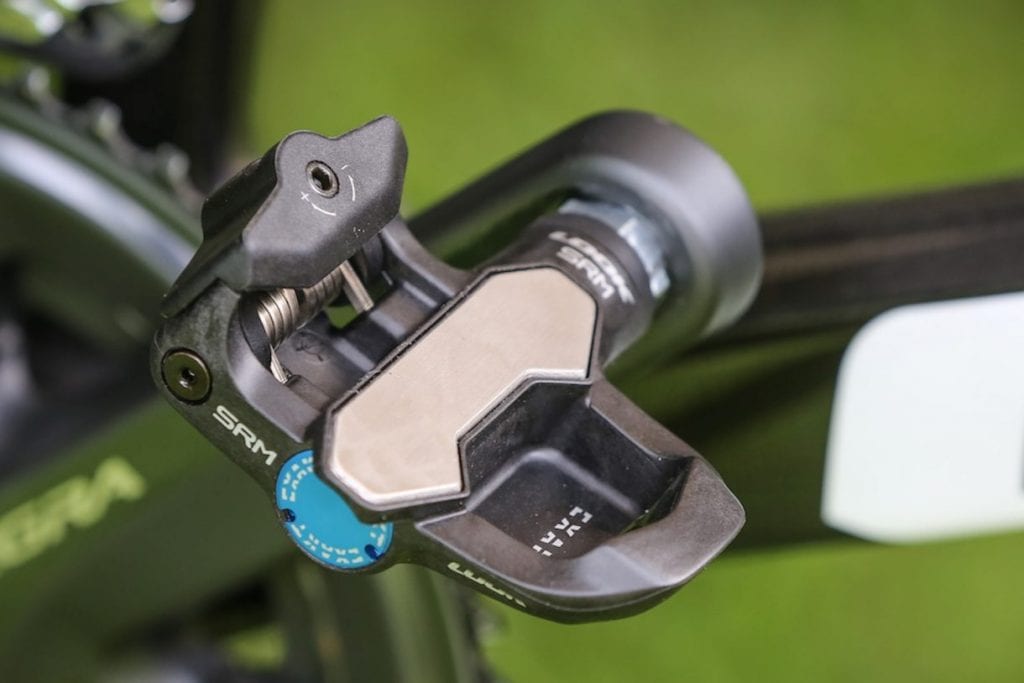
Pedal-based powermeters are easy to swap between bikes.
Compatibility also isn’t an issue here as they can generally attach to any crankarms.
However, you might need to change your cleats. The major manufacturers of pedal-based powermeters, including Powertap, Garmin, and SRM use LOOK style cleats.
And while they stay clear of your drivetrain, they are also in a more vulnerable location as the pedals on a bike have a tendency to take a beating. These types of meters are usually sold as single-sided, which measures one side only, and double-sided options that offer left side and right side power data.
Examples of pedal based powermeters : Garmin Vector 3, SRM Exakt
4. Wheel Hub
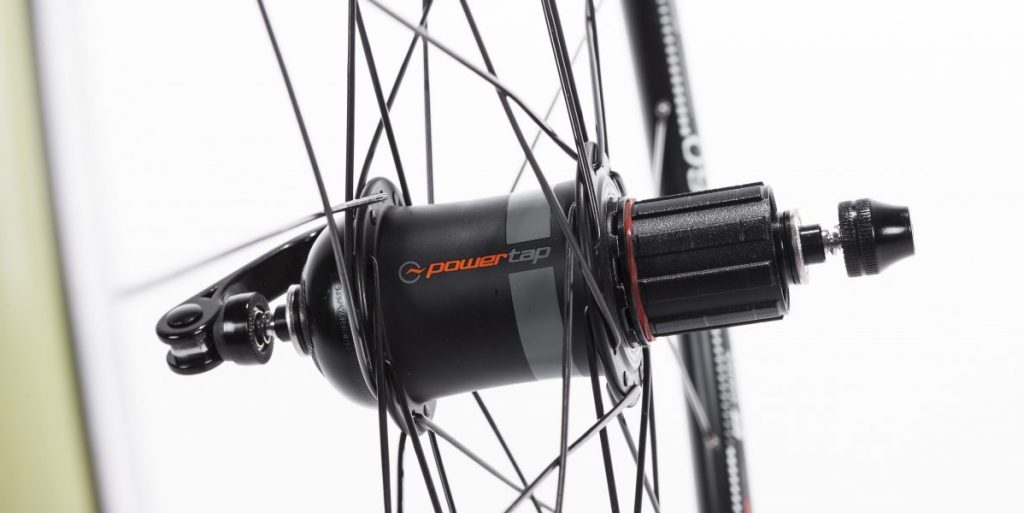
Wheel hub powermeters aren’t one of the more popular options out there today. In fact, only one company manufactures them, PowerTap, which was acquired by SRAM last spring.
They add more weight to your set up than other types of a powermeter.
Installation is also not something you can do yourself. Since they’re located in the rear wheel hub, the wheel will need to be custom-built in order for them to be installed.
They do have their advantages though. They’re cheaper than other types, making them a great option for budget-minded cyclists.
And since they are incorporated into the wheel hub, you can easily swap between bikes, making this a great option if you have several bikes.
Example of wheel hub powermeters : Powertap G3
6 Questions Ask Before Buying A Powermeter
1. Will It Fit Your Existing Bike Setup?
For most cyclists, powermeters are an add-on purchase that comes after they’ve been on their bikes for a while.
Because of that, it’s important to understand that not all powermeters will fit all bikes’ setup. You need to familiarize yourself with your bike before purchasing it.
Spider Based
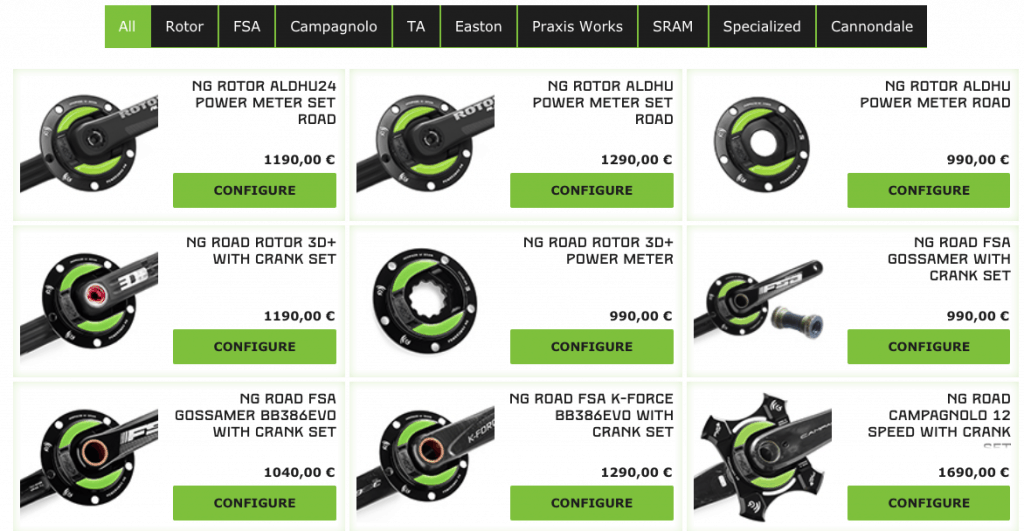
Spider based powermeters will also require you to know the brand of the crankarm and the BCD (Bolt Chainring Diameter) size of your chainrings.
BCD is the distance between the bolts that are across from each other on a chainring. Common chainring sizes include 110 and 130, 4-bolt Shimano, and Campagnolo. Since the spider-based powermeter will replace your existing spider, it must match up with the chainrings that will attach to it.
Spider-based powermeter manufacturers such as Power2Max and SRM offer many different variants that are compatible with a wide range of crankarm brands and chainring sizes.
Single Sided (Left Side)
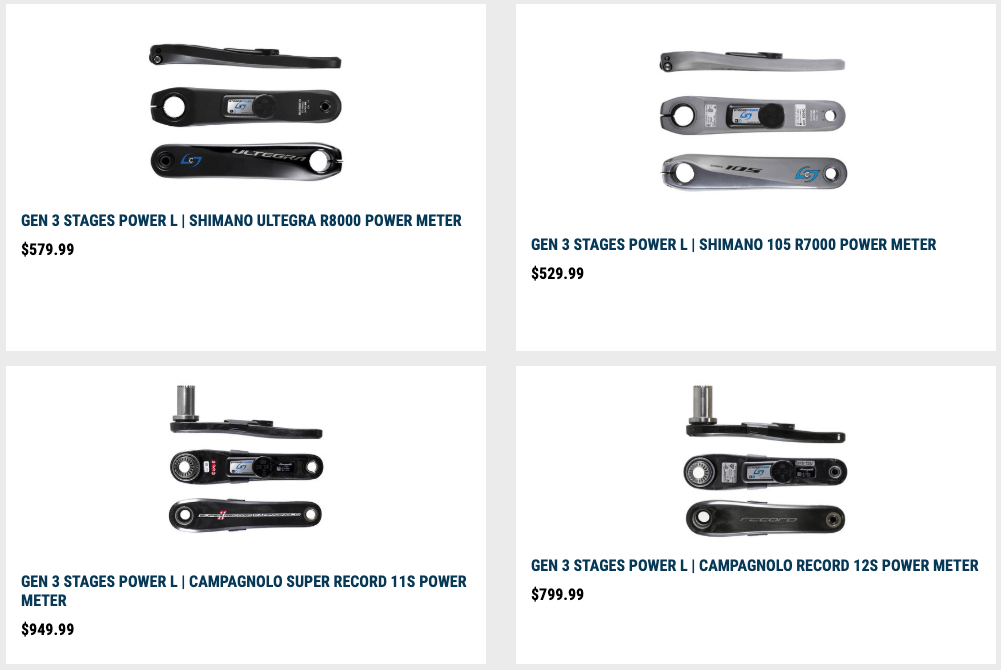
If you plan on using a powermeter that attaches to the left crankarms, you’ll need to know the brand of your crankarms. You can often find left-sided powermeters for Shimano, SRAM, Campagnolo, or Cannondale crankarms.
You also need to match the length of your existing crankarms to the new ones. Crankarm lengths generally range from 165mm to 175mm.
Pedal Based
Compatibility for pedals is not usually an issue. Most road bike pedals are compatible with most cranksets, and so most powermeter pedals such as Garmin Vector 3 and SRM Exakt will be compatible with your bike.
Wheel Hub
For wheel hub powermeters, you’ve pretty much got one choice as PowerTap remains the only manufacturer here.
You’ll need to either build a new rear-wheel or replace your existing rear wheel hub with the powermeter.
Read More : 9 Questions to Ask Before Building A Custom Wheelset
2. How Accurate are the Readings?
If you’re going to invest in a powermeter, and it’s quite an investment ranging anywhere from $500 to $2,000, you want to know that it’s going to provide you with accurate and consistent data.
And since the goal of a powermeter is to help you to improve your power output, consistency is just as important.
If the powermeter is 1.5% off one day, you need it to be 1.5% off every day in order to get useful data. Keep in mind that different brands of meters offer different levels of accuracy.
3. Does it Have ANT+ and Bluetooth Connectivity?
Older powermeters transmit data using ANT+, which allows them to connect most bike computer systems such as Garmin. Newer ones offer Bluetooth connectivity, which allows them to connect to smartphones and tablets. Today, most powermeters offer both options.
Decide what type of device you will be used to track your power output, then determine if you will need a device that offers Bluetooth, ANT+, or both. Most cyclists use a bike computer.
There are some things to consider when making this decision. ANT+ powermeters can connect with multiple ANT+ head units at once, while a Bluetooth powermeter can only communicate with one head unit at a time.
Read More : Wahoo Elemnt vs Bolt vs Roam – The Differences Explained
4. How Long is the Battery Life?
I suppose it goes without saying that a powermeter will need its own power in order to tell you how much power you’re producing.
Power for your powermeter comes in two forms, USB charge, and coin-style batteries. Newer models and higher-end models such as the Power2Max NG and SRM Origin are mostly USB rechargeable today.
Coin-style batteries used in models such as Quarq Dzero and Power2Max NG Eco generally give between 200 and 400 hours of riding time before needing replacement.
5. How Easy to Maintain It?
The maintenance for a powermeter isn’t particularly involved as bike accessories go.
They may require battery changes and firmware updates. This sounds simple, but you still want to make sure that swapping out a battery doesn’t involve a lengthy uninstall and reinstall of the powermeter from your bike or worse, having to send it off.
For example, older SRM’s require that they be sent back to the manufacturer for battery replacement.
You also want firmware updates to be relatively easy either through a USB cable or a quick Bluetooth connection.
Read More : 7 Basic Bike Maintenance Tips for All Cyclists
6. Do They Have An Excellent Warranty and Reliable Support?
Powermeters are delicate pieces of electronics that need to be correctly calibrated and installed in order to work properly.
Although they are designed to handle the perils of being attached to a bike hurtling down the road through all manner of weather, they’re still expensive delicate pieces of electronics that can fail.
With that in mind, you’ll want a manufacturer that offers support when something isn’t working and replacement or repair for as long as possible if something stops working.
Look for manufacturers that offer some kind of warranty that will cover the manufacturer’s defects for at least one year. Also, stick to tried and true known manufacturers in the bike industry like Shimano, SRAM, Power2Max, SRM and Garmin.
These are companies that you know will stand behind their products and offer solid customer support.
Author Recommended Reads

